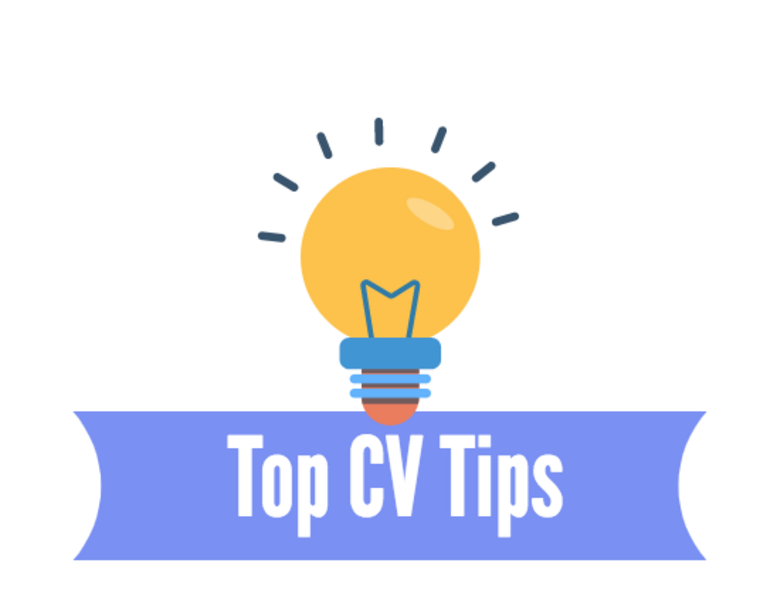6 Tips for Creating/Updating a Creative CV
Posted over 7 years ago by Rebecca Thomas

This may sound obvious, but it is essential that your contact information is displayed clearly on your CV. If your skills are shining through on your CV, the first thing the hiring party wants to do is contact you, so make sure you place this information so it’s easy to find.
You should include an email address AND contact number, as recruiters will most likely want to give you a call as soon as possible. It is also worth indicating whether you’re also open to relocation; this is particularly handy for recruiters so they can consider you for all opportunities that could be right for you.

Headings, bullet points, paragraphs, boxed sections, should all be considered when planning the layout of your CV. Using these tools helps to succinctly display the information you need to relay; as a creative, potential employers will be looking to see that you can relay key information in a simple, concise and visually appealing way. Once you have mastered which sections require which treatment you then need to think chronologically. Think about how you are telling the short story of ‘you’ in your CV; it’s always nice to include an ‘about me’ section to set the scene, before moving into your work history. The aim is to ensure it has a clear flow to it. Opinions vary, but our advice is to leave your education and software skills until after your core experience; employers are more interested in what you’ve done than how many GCSE’s you’ve got.
Some people suggest that CVs must stick to one page; this isn't strictly necessary and it’s fine if it ends up as two. Make sure when you are proofreading to edit down as best you can; only the most interesting and relevant information is needed on a CV and it’s good to save some things for the interview.

This tip ties in with the above point, but as someone that is applying to work in the creative industries you need to take the design of your CV to the next level. We’re not advocating over designing your CV, but it should demonstrate that you have a clear sense of layout and type. You need to be aware of the consistency of the document; for example, a consistent use of type for headings/body text. As a creative think about why you are using the type/colour that you are, how will it represent you and is it accurate in terms of what you are trying to relay?
The colours and themes used in your portfolio should, if possible, be reused in your CV. This helps to clearly show your style and ‘brand’. Remember, a careful balance needs to be struck to ensure your document isn't under designed and easy to dismiss, but equally, it isn't over designed and hard to read.

Stick to the last one or two positions you had to go into detail as it helps to give employers an accurate insight into your most recent experience. It is perfectly acceptable to list core responsibilities in bullet point form as it makes your responsibilities and skills, clear and concise. Where possible include specific achievements; these could include things like award wins.
It’s still important to detail other employers you’ve worked for, but an employer doesn't need to read about the shop job or bar work you did years ago in finite detail. For previous work we suggest a clean list with the dates you were employed. However, it may be that you learnt some valuable lessons from those early positions, and if you don't have a long employment history do include those along with other work experience that is relevant to the job you are applying for.

While the main point of a CV is to show your skill set and career history it is also the first opportunity you have to stand out. You can infuse part of your personality by including a ‘hobbies/interests’ section. Try to make these relevant to the job, or that tell the employer something unique you enjoy doing like Archery or Zip-lining, as it instantly makes you more interesting and can offer up a talking point at interview
If you have participated in volunteer work, travelled or completed a sporting feat, feel free to work this into your ‘about me’ section. Make sure to bring it back to what it taught you in either the skills you’d bring to the workplace or how it highlights a great part of your personality; this isn’t a dating profile after all!
When applying for a role in the creative industry it isn't enough to send a CV detailing achievements without an accompanying portfolio. These days a lot of creatives prefer to use an online portfolio, so do make sure the link is clearly highlighted on your CV if this is your preference. Alternatively, we suggest sending your portfolio with your CV or including your portfolio into the same file.
For a full guide to what employers look for in a portfolio check out our previous article. Overall, stick to these top portfolio tips:
File Size
Save the document as PDF so that it can be easily opened and compress it down as much as possible without compromising the quality so that you don’t risk it not being successfully delivered. We recommend the file size to be no larger than 10MB.
Editing
A way to keep it at a lower size is good editing and sticking to your best bits. Employers don’t have time to look through every piece of work you have ever completed and if you are honest with your editing, you will recognise there are some pieces that stand out more than others; use those only.
Brand
Try to show your skill set through your portfolio but also your own personal brand. What is it that sets you apart in your design/approach etc? Try to show the special thing about you through the various work in your portfolio.
Conclusion:
Your CV is the chance to give a glimpse of your talent and as a creative, you want to show some of your skills, however, this isn’t a design project. Do not overcomplicate your CV; the best are usually the most simple in terms of design, they are clear and easy to read. Do remember to proof read your work - spelling and grammar checks are a pre-requisite! - and even get a friend in the industry to take a look and give you a second opinion. These things should get your CV in a great place and start the recruitment process off on the right foot.





